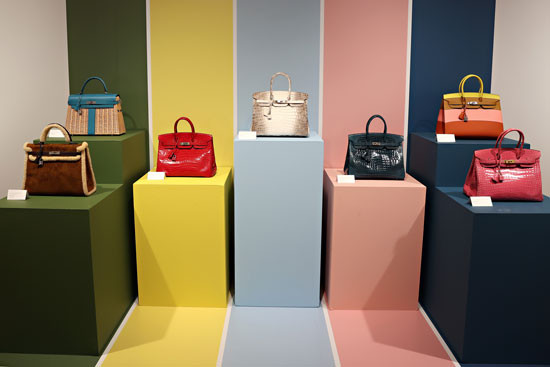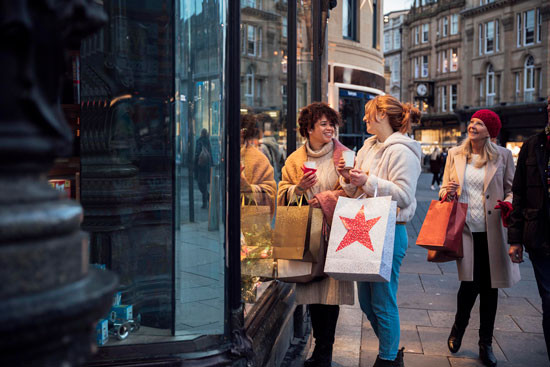The Purse of Theseus: Superfakes, Taxation, and the Philosophy of Duplication

Taxation is often overlooked in the shadowy world of counterfeit luxury goods, where the allure of high-end fashion meets mass production. While designer knockoff purses, shoes, and accessories may seem like harmless replicas at first glance, their presence in the market triggers a cascade of financial implications, for consumers and governments alike.
In short, counterfeit luxury goods not only undermine the revenues of legitimate businesses but also pose significant challenges in terms of taxation. And, as ‘superfake’ handbags – fake luxury products that are almost indistinguishable from the real thing – become increasingly popular, more and more consumers are willing to purchase impressive knockoffs.
The legend of Theseus, who sailed triumphantly home to Athens on a ship continually renovated by its citizens, offers a poignant metaphor. Just as Athenians replaced rotting planks to maintain the integrity of Theseus's vessel, tax authorities are tasked with patching up the fiscal holes created by the continued circulation of counterfeit goods.
The Tax Tango: From Production to Sale
At its core, the counterfeit industry thrives on bypassing regulations and evading taxes. Unlike legitimate luxury brands that adhere to strict manufacturing standards and tax obligations, counterfeit operations operate in the shadows, exploiting legal loopholes and slipping through regulatory cracks.
Counterfeit goods pose a significant challenge for tax authorities due to their clandestine nature and the complexity of global supply chains. Unlike legitimate businesses, including LVMH, Chanel, and Hermès, counterfeiters often operate in jurisdictions with weak enforcement mechanisms, allowing them to evade taxes and undercut legitimate businesses."
Moreover, the sale of counterfeit luxury goods typically results in a significant challenge for tax authorities worldwide. These items are often sold through informal channels such as street vendors – New York City’s famous Canal Street comes to mind – online marketplaces, or underground networks, making it difficult to track sales and enforce tax collection.
As a result, governments lose out on substantial tax revenue that could have been generated from the sale of legitimate luxury goods.
Per Statista, “The global revenue in the luxury goods market was forecast to continuously increase between 2024 and 2028 by in total 49.9 billion U.S. dollars (+13.53 percent). After the eighth consecutive increasing year, the indicator is estimated to reach 418.84 billion U.S. dollars and therefore a new peak in 2028.”
Those numbers could be even higher if the ‘superfake’ market didn’t exist.

Cindy Ord/Getty Images Entertainment via Getty Images
The Consumer Side: Tax Obligations and Financial Risks
From a consumer standpoint, purchasing counterfeit luxury goods can also have tax implications. While buyers may be drawn to the allure of designer labels at a fraction of the cost, they often overlook the potential financial risks associated with these purchases.
Consumers need to be aware that purchasing counterfeit goods supports illegal activities and exposes them to potential tax liabilities. Many buyers are unaware of the tax obligations associated with importing counterfeit products, which can lead to legal and financial consequences, particularly if they are the subject of a tax audit.
The Cat-and-Mouse Game: Enforcement Challenges
Despite efforts by law enforcement agencies and customs authorities to combat counterfeiting, the underground nature of this industry poses significant challenges. From counterfeiters operating in remote locations to the proliferation of online marketplaces, enforcing tax laws and intellectual property rights remains an uphill battle.
International authorities are always working to dismantle counterfeiting rings. “By attacking the distribution networks, and by disrupting production at the source, participating countries have contributed towards globally protecting people from potentially unsafe goods, and made them safer by dismantling illegal networks which are often connected to other forms of serious crime,” said Tim Morris, INTERPOL’s Executive Director of Police Services.
However, counterfeiters regularly alter their tactics to evade detection, making it challenging for law enforcement agencies to keep pace. Collaboration between government agencies, international organizations, and the private sector is essential to disrupt counterfeit supply chains and protect consumers.

The Solution: Collaboration and Innovation
Addressing the tax implications of counterfeit luxury goods requires a multifaceted approach that combines regulatory reform, international cooperation, and technological innovation. Governments must strengthen enforcement mechanisms, enhance cross-border collaboration, and implement stricter penalties for tax evasion and intellectual property infringement.
Furthermore, technology such as blockchain and digital authentication tools can help trace the origins of counterfeit products and verify their authenticity. By harnessing the power of data analytics and artificial intelligence, tax authorities can identify patterns of illicit activity and target enforcement efforts more effectively.
Additionally, awareness matters – when people don’t understand the true cost of fake goods, it makes it easier to justify the sale of these products. As a 2011 Vogue article reported, even Jane Birkin, whose name is the moniker of the legendary Hermes Birkin bag, said, “It’s very nice that everyone’s got one or wants one [the Birkin]. If people want to go for the real thing, fine. If they go for copies, that’s fine, too. I really don’t think it matters.”
Balancing the Books in Counterfeit Culture
In the complex ecosystem of counterfeit luxury goods, taxation is a critical, yet often overlooked, component. From lost tax revenue to consumer liabilities, the presence of knockoff products in the market poses significant challenges for governments, consumers, and legitimate businesses alike.
As the counterfeit industry continues to evolve and adapt, addressing the tax implications of these illicit goods requires a concerted effort from policymakers, law enforcement agencies, and technology providers. By collaborating across sectors and leveraging innovative solutions, stakeholders can work towards a future where counterfeiters are held accountable, consumers are protected, and tax revenues are safeguarded.

In the end, though, no matter how well-manufactured a ‘superfake’ handbag is, there’s a certain je ne sais quoi about the real thing – Judith Thurman discussed the temptation of authentic luxury goods with the New York Times, saying, “There was an aura to the real thing [an Issey Miyake Bao Bao] that the fake didn’t have. And if you ask me what does that mean, I really almost can’t say. Part of it was the spirit of going to the shop and paying more money than I could afford.”
Want our best tax and accounting tips and insights delivered to your inbox?
Sign up for our newsletter.
Location
Lake Dallas, Texas 75065